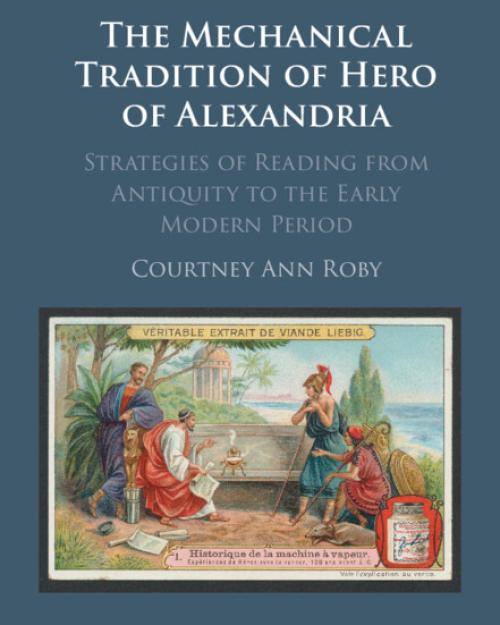Hero of Alexandria, ancient Greek mathematician and engineer, is a figure known almost entirely through his writings. We have little of his biography, including his timeframe, but his books on things like pneumatics, pure geometry and catapults have influenced many others through the ages and his principles touch early modern inventions including the player piano and the fire engine.
“The historical Hero is a ghostly apparition, but the Hero created through centuries of imaginative recreations and appropriations of his work becomes a vivid and multifaceted figure: inventor and curator, mechanician and mathematician, wonder-worker and cultivator of banal practicalities,” writes Courtney Ann Roby in her new book, “The Mechanical Tradition of Hero of Alexandria."
In the book, Roby, associate professor of classics in the College of Arts and Sciences, emphasizes the importance of Hero’s lasting contributions to mechanical thought while working through a particularly “messy” manuscript tradition. The first full-length monograph about Hero, the book presents his key strategies for developing, solving and contextualizing technical problems.
Roby will talk about “The Mechanical Tradition of Hero of Alexandria” during a Cornell Library Chats in the Stacks book talk on Wednesday, Feb. 21 at 4:30 p.m. in Olin Library 107 and online.
The College of Arts and Sciences spoke with Roby about the book.
Question: As you study the books and writing Hero of Alexandria contributed to the world, what portrait emerges for you?
The image I kept in my mind while I was formulating the book was Marcel Duchamp’s "Nude Descending a Staircase #2." There you have this mind-bendingly complex, nearly incomprehensible blur, but if you conceive of it as a single figure shifting as it moves through space and time you can start to make sense of it.
Likewise, I started out with this mass of Hero manuscripts and that was quite demoralizing, but once I started to think of “Hero” as a dynamic process of adapting other peoples’ texts and technologies, yielding a set of texts that were themselves apt to be adapted and reshaped, the project became much clearer. I could focus on that process of reinvention rather than trying to stipulate a historical “Hero” who lived at some particular time.
Question: The book opens with a description of a device made of bronze components that is propelled by steam. What do you think motivated Hero to create this and other devices, to experiment with natural forces and to write about his ventures?
There are some jokes about philosophy scattered through the Heronian corpus. In his book on catapults, he alludes to the Epicurean philosophical search for ataraxia or inner peace, saying the best road to ataraxia is to get better catapults. In his book on measuring geometrical figures of all kinds he alludes to a debate from Plato about the justice of various kinds of mathematical proportionality. And in the book that bronze device comes from, the “Pneumatica,” he describes these devices as “traps” for philosophers who would otherwise debate forever about whether there is any void in nature.
Hero thinks matter is made of particles separated by tiny “microvoids,” and hence all matter is to some extent compressible, by squeezing the particles into those void spaces. The “Pneumatica” is about creating pressurized environments so you can see or hear that pressurization, and hopefully come around to Hero’s view on matter.
I think a lot of what inspired him was the dominance of philosophical discourse in his intellectual environment, and a conviction that some of those philosophical questions could be better solved by experimental demonstrations than just verbal debate.
Question: How did Hero influence mechanics through the 18th century? What are Hero’s main contributions to technical traditions?
A big part of Hero’s influence was the way he balances the abstract and concrete, mathematical and material aspects of scientific and technical systems.
We can contrast him with someone like Archimedes, who explores in great detail the mathematics around the principle of the lever and thus provides a set of mathematical tools that can be used for practical ends but doesn’t really discuss those applications in the books we have from him. Hero, by contrast, pretty much always puts his math in service of practical goals, for instance building a catapult or an automatic theater, or measuring the volume of a vaulted ceiling.
In that sense I think he provided a blueprint for more practical-minded scientific and technical creators in the early modern period, like Salomon de Caus, who uses Hero’s pneumatic principles as a jumping-off point for designing both entertaining devices, such as a player piano based on Hero’s water organ, and practical ones, like an improved fire engine based on Hero’s own design.





